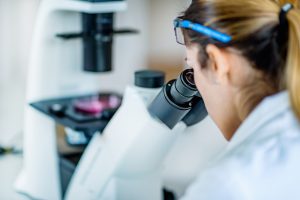
Researchers published a study “Epigenetics as a mediator of plasticity in cancer” in Science that they say addresses new quantitative approaches to better define and measure epigenetic defects in gene function and their interplay with the genetic landscape of cancer.
In cancer development, epigenetic changes promote phenotypic plasticity, the continued change in tumor cell behavior that helps cancer invade surrounding tissue, metastasize to other organs and evade natural defenses ( such as the immune response) and chemotherapy. In cancer, this plasticity highlights the malignant cell’s ability to change states to invade other cells and tissue throughout the body and to maintain survival.
Mathematics has provided powerful tools to connect phenotypic plasticity in cancer to the epigenetic changes that drive it, according to Andrew Feinberg, MD, of the Johns Hopkins Kimmel Cancer Center and the Institute for Basic Biomedical Sciences. In particular, the measurement of entropy can now be applied to epigenetics, he adds.
Epigenetic information is eroded
As cancers develop, the epigenetic information controlling cell behavior is eroded, and we can identify the locations in the epigenome where this occurs and the genes that drive this increased entropy, notes Feinberg.
“During differentiation, living cells within complex organisms adopt phenotypic states of progressive specificity. Cancerous cells and tissues violate this property, adopting increased plasticity of cell states, tissue structure, and function during their progression. The information about the repertoire of normal differentiation outcomes is genetically encoded, but the information about the particular realization of this potential and cell regulation in response to the environment is encoded epigenetically in DNA methylation and biochemical modification of chromatin,” write Feinberg and colleagues in the Science article.

“In the physical sciences, potential energy landscapes and their relationships to the probability distribution of physical or chemical states have been developed and refined for decades, but they have only recently been applied to more quantitatively realize Waddington’s classical landscape idea.
“Such approaches are particularly appealing in describing the cancer epigenetic landscape given that the plasticity of cell states realized on such a landscape lies at the functional core of the disease.”
New quantitative analytic techniques
Novel techniques in the quantitative analyses of the cancer epigenetic landscape “now provide the tools to understand the connections between genetics and other drivers of cancer development and growth and the relationship to epigenetic regulatory networks that mediate the landscape,” Feinberg points out.
Recent approaches that integrate cancer biology and mathematics may make it possible to distinguish cancer cells from normal cells, and to quantify and measure the epigenetic modulation of cells states and how it influences the behavior of cells, according to the research team.
“If we understand these processes, we might be able to identify chemical changes that occur only in cancer cells to diagnose cancer better and earlier and predict its behavior, so we can intervene with more targeted therapies,” says Feinberg. “These quantitative approaches must be part of the cure. We can’t understand cancer without them.”

